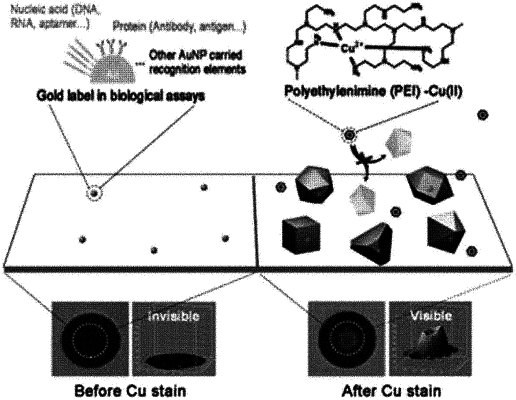| CPC G01N 33/553 (2013.01) [G01N 33/532 (2013.01); G01N 33/54346 (2013.01); G01N 33/54366 (2013.01); G01N 33/54393 (2013.01); B82Y 30/00 (2013.01)] | 15 Claims |

|
1. A composition for amplifying an optical scattering signal from a biological material labelled with a gold nanoparticle, the optical scattering signal generated in response to a light delivered to the biological material, the composition comprising:
a copper ion in solution;
a polymer comprising a primary or a secondary amine group, the primary or the secondary amine group reacts with the copper ion, wherein said polymer comprising a primary or a secondary amine group is polyethyleneimine;
a reducing agent, wherein said reducing agent is ascorbic acid, hydroxylamine or hydroquinone; and
the gold nanoparticle,
wherein a copper crystal is specifically presented on a surface of the gold nanoparticle, and said copper crystal is formed by a reaction of the copper ion and the polymer comprising a primary or a secondary amine group and the reducing agent.
|